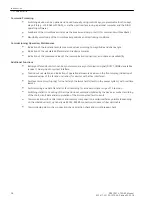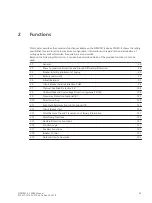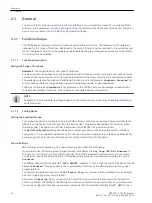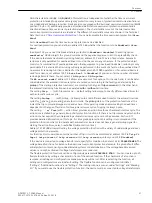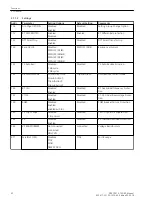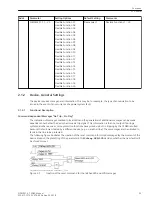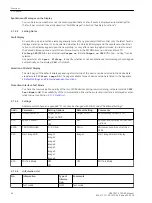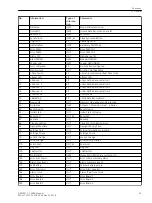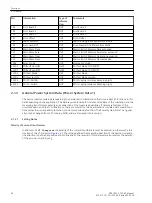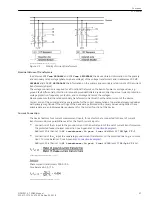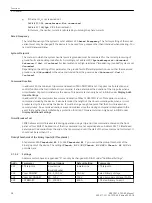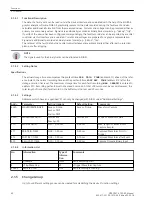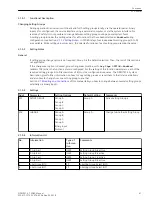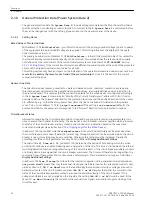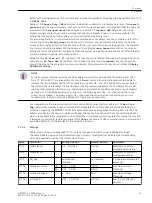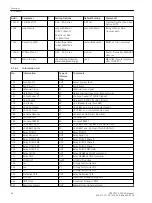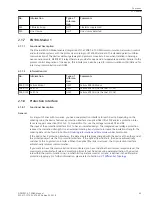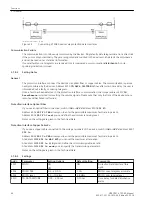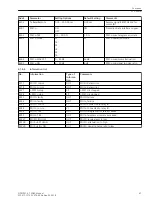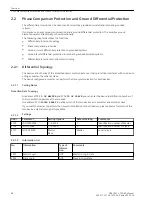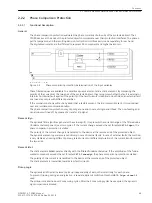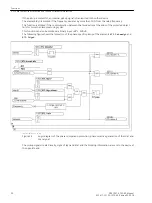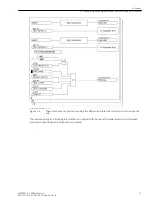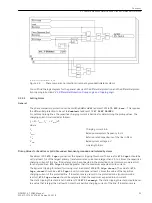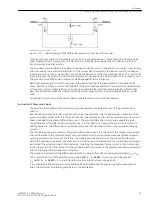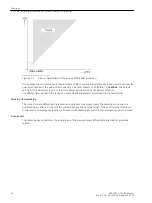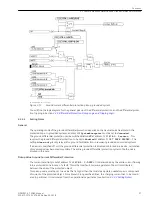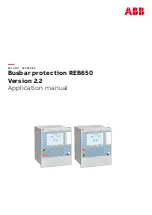
General Protection Data (Power System Data 2)
The general protection data (
P.System Data 2
) include settings associated with all functions rather than a
specific protection, monitoring or control function. In contrast to the
P.System Data 1
as discussed before,
they can be changed over with the setting groups and set on the operator panel of the device.
Setting Notes
Rated Values of Protected Lines
With address 1103
FullScaleVolt.
you inform the device of the primary nominal voltage (phase-to-phase)
of the equipment to be protected (if voltages are applied). This setting influences the displays of the opera-
tional measured values in %.
The primary nominal current (address 1104
FullScaleCurr.
) is that of the protected object. For cables the
thermal continuous current-loading capacity can be selected. For overhead lines the rated current is usually
not defined. set the rated current of the current transformers (as set in address 205
CT PRIMARY
, Section
). If the current transformers have different nominal currents at the ends of the protected
object, set the highest nominal current value for all ends.
This setting will not only have an impact on the indication of the operational measured values in per cent, but
must also be exactly the same for each end of the protected object, since it is the basis for the current
comparison at the ends.
General Line Data
The directional values (power, power factor, work and based on work: minimum, maximum, average and
threshold values), calculated in the operational measured values, are usually defined positive in direction to
the protected object. This requires that the connection polarity for the entire device is configured accordingly
in the
P.System Data 1
(compare also “Polarity of the Current Transformers”, address 201). But it is also
possible to define the „forward“ direction for the protection functions and the positive direction for the power
etc. differently, e.g. so that the active power flow (from the line to the busbar) is indicated in the positive
sense. To do so, set address 1107
P,Q sign
to
reversed
. If the setting is
not reversed
(default), the
positive direction for the power etc. corresponds to the “forward” direction for the protection functions.
Circuit-Breaker Status
Information regarding the circuit-breaker position is required by various protection and supplementary func-
tions to ensure their optimal functionality. The device has a circuit-breaker status recognition which processes
the status of the circuit-breaker auxiliary contacts and contains also a detection based on the measured
currents and voltages (see also Section
2.16.2 Tripping Logic for the Entire Device
).
In address 1130 the residual current
PoleOpenCurrent
is set, which will definitely not be exceeded when
the circuit-breaker pole is open. If parasitic currents (e.g. through induction) can be excluded when the circuit
breaker is open, this setting may be very sensitive. Otherwise this setting must be increased. Usually the
presetting is sufficient. This parameter can only be set in DIGSI at Display Additional Settings.
The seal-in time
SI Time all Cl.
(address 1132) determines the period of time during which the active
protection functions are enabled following each energization of the line. This time is started when the internal
switching detection function recognizes closing of the circuit breaker or if the circuit-breaker auxiliary contacts
or a binary device input signal that the circuit breaker was closed. The time must therefore be longer than the
command time of these protection functions plus a safety margin. This parameter can only be set in DIGSI at
Display Additional Settings.
In address 1134
Line Closure
the criteria for the internal recognition of line energization are determined.
only with ManCl
means that only the manual close signal via binary input or the integrated control is eval-
uated as closure.
I OR V or ManCl
means that additionally the measured currents or voltages are used to
determine closure of the circuit breaker, whereas
52a OR I or M/C
implies that either the currents or the
states of the circuit-breaker auxiliary contacts are used to determine closure of the circuit breaker. If the
voltage transformers are not arranged on the line side, the setting
52a OR I or M/C
must be used. In the
case of
I or Man.Close
only the currents or the manual close signals are used to recognize closing of the
circuit breaker.
2.1.6
2.1.6.1
Functions
2.1 General
42
SIPROTEC 4, 7SD80, Manual
E50417-G1100-C474-A2, Edition 02.2018
Summary of Contents for SIPROTEC 4 7SD80
Page 8: ...8 SIPROTEC 4 7SD80 Manual E50417 G1100 C474 A2 Edition 02 2018 ...
Page 10: ...10 SIPROTEC 4 7SD80 Manual E50417 G1100 C474 A2 Edition 02 2018 ...
Page 18: ...18 SIPROTEC 4 7SD80 Manual E50417 G1100 C474 A2 Edition 02 2018 ...
Page 248: ...248 SIPROTEC 4 7SD80 Manual E50417 G1100 C474 A2 Edition 02 2018 ...
Page 298: ...298 SIPROTEC 4 7SD80 Manual E50417 G1100 C474 A2 Edition 02 2018 ...
Page 312: ...312 SIPROTEC 4 7SD80 Manual E50417 G1100 C474 A2 Edition 02 2018 ...
Page 322: ...322 SIPROTEC 4 7SD80 Manual E50417 G1100 C474 A2 Edition 02 2018 ...
Page 400: ...400 SIPROTEC 4 7SD80 Manual E50417 G1100 C474 A2 Edition 02 2018 ...
Page 402: ...402 SIPROTEC 4 7SD80 Manual E50417 G1100 C474 A2 Edition 02 2018 ...

